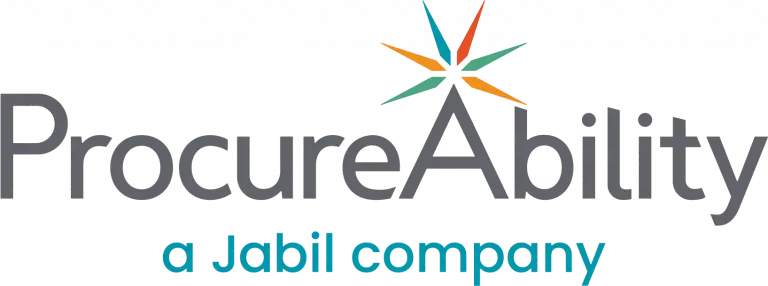Electric Utilities Remain Challenged in Supply Network Resiliency and Supplier Collaboration
St. Petersburg, FL (May 13, 2025) – In a recent Supply Chain Matters article, ProcureAbility CEO Conrad Snover spoke with Executive Editor Bob Ferrari about the growing challenges electric utilities companies face – and how they can strengthen their supply networks for the future.
Read Bob Ferrari’s full article in Supply Chain Matters and below:

- Commercial Aircraft
- Global Automotive
- Semiconductor, High Tech and Consumer Electronics
Within the latter category, it specifically included Electrical Utilities and Infrastructure Supply Networks.
The implications for vast amounts of electrical power needed to support Advanced AI compute needs, coupled with the ongoing and eventual increase in electric powered motor vehicles are leading to compelling needs for public utilities to both expand capacity and provide added resilience to electrical power grids. To reach zero-emissions commitments, such grids have to be supported by renewable energy sources.
The International Energy Association (IEA) has estimated that global investment in electrical grid infrastructure reached upwards of $400 billion in 2024. The agency further predicts that annual spending will rise to $600 billion by 2030. Demand levels are reportedly expected to increase six-fold in energy use in the decade ahead.
Coupled with such demand needs is the reality that existing global wide electrical grid infrastructure is rather dated and in need of upgrades along with supplemental capacity.
Thus, Supply Chain Matters’ prediction is that protecting and supplementing electrical infrastructure supply networks will become more strategic in government policies in 2025 and subsequent years. The same concerns relative to dependence on a single country such as China, or a particular region such as Asia in supply network concentration, including specification of technologies and underlying components will occupy and drive supply network sourcing developments.
Recent White Paper Assessment
This supply chain industry analyst had the opportunity to speak with ProcureAbility, a Jabil company, a provider of procurement, managed service and advisory services, including electrical utility companies.
ProcureAbility has published a white paper titled: Currents of Change, Electrification’s impact on the utility supply chain. This paper explores the disruptions caused by supply chain constraints, the challenges in securing essential resources, and the strategies utility companies must adopt to mitigate these issues.
The paper declares that “utilities must adopt a more flexible and dynamic approach to supply chain management. This includes improving collaboration with suppliers, enhancing visibility into supply chain performance and investing in risk management tools that can predict disruptions before they occur”.
The above is a very familiar lament to many of our industry readers.
I had the opportunity to speak directly with CEO of ProcureAbility, Conrad Snover.
In our discussion, Conrad observed that this industry remains challenged by aging infrastructure and other business priorities that often garner more of the attention of funding and investments.
The industry is continually challenged with increased supply demands, needs for smarter utility grids and expansion of renewable energy needs.
S&P Global Commodity Insights estimates that in order to meet current demand generation across the U.S., utilities would require the need to add a minimum of nine times as much renewable energy sourced power generation as natural gas by 2040.
There tends to be established suppliers. but supply is often reliant on global based material movements, hence an added challenge in today’s high uncertainty business environments. Electrical generation fuel source alternatives exist among natural gas or renewable fuel sources. Yet, as a recently published New York Times report observes building a natural gas powered facility is just as expensive as one powered by solar paired with batteries. With existing widescale tariff hikes, the costs and potential added lead times are likely to become more challenging and more dynamic to assess.
Regarding supply chain strategy, the focus tends to be procurement and logistics. This approach is a focus on the build out or modernization of existing power generation and distribution capabilities and thus the focus is mostly driven by project based procurement and logistics. Existing tools are described as email, spreadsheets and custom software applications. Material lead times tend to drive project needs vs. specific customer needs.
One of the ongoing challenges described is “sustainability of supply” which equates to supply resilience in various operational, tactical and strategic time dimensions. A further industry challenge is described as maturity of analytics in the ability for more timely identification of potential supply volatility. Yet, the industry tends to overestimate future electrical power demand in their multi-year forecasts.
Governmental Policy and Oversight
As demands for added electrification continue to expand, utilities are often constrained by the governmental oversight and regulations related to rate structures and needed capital investments.
In the ProcureAbility sponsored white paper, supply needs are identified as critical raw materials such as copper, lithium and rare earth metals utilized in the production of batteries, electrical cables, transformers and other equipment. There remains a condition of under sourced and underfunded procurement organizations.
As Supply Chain Matters and other supply chain focused media and insights have noted of late, the current escalation of tariffs and associated trade conflict have added to the concerns related to both supply resilience and significant cost volatilities.
Specifically noted in the ProcureAbility white paper: “To overcome these types of disruptions, utilities must strengthen relationship with suppliers, embrace supply chain visibility tools, monitor governmental and regulatory policies and invest in advanced forecasting methods.”
Added Thoughts and Perspectives
Within our predictions advisory we had noted that protecting and supplementing electrical infrastructure supply networks will become more strategic in government policies in 2025 and subsequent years.
Thus far from a U.S. centric perspective, such policies do not seem to be garnering the same attention as other strategic industries. The Trump Administration of late has reportedly been encouraging power generation supplies to source production domestically, and the Times report indicates that there are discussions as to invoking the Defense Protection Act to boost domestic supply chain sources. But, even if this were to occur, it would still take multiple years to build out a supply network capability.
One exception might be the recent supply agreement signed among Ukraine and the United States for the strategic supply of rare earths.
All of this stated there is an obvious need for added investment in material sourcing and supply management skills and capabilities.
In the coming weeks Supply Chain Matters will be featuring added updates on specific industries and their respective and unique product demand and supply network challenges.
Read the full article on Supply Chain Matters.
About Conrad Snover
As CEO of ProcureAbility, Conrad focuses on client success, employee engagement and culture, and product innovation. Conrad has more than 25 years of experience in strategic procurement and supply chain management. He has deep experience in launching and managing programs focused on strategy design, procurement transformation, category management, strategic sourcing, supplier development, and organizational sustainability.
Conrad has consulted with numerous Fortune 1000 companies in a variety of industries including oil and gas, utilities, technology, banking and insurance, hospitality, and healthcare. Conrad is on the Board of Directors of both the Utility Supply Management Alliance (USMA), and the Utility Purchasing Management Group (UPMG) and is a frequently requested presenter at national supply chain conferences such as USMA, UPMG, Platts, SIG, WEI, and APPA. He previously worked in strategic procurement as a consultant with Kearney.
Conrad holds a bachelor’s degree in business from the University of Washington. A retired sponsored athlete and aspiring ski-mountaineer, he spends his free time adventuring in the outdoors with his wife and their young son.
About ProcureAbility
ProcureAbility, a Jabil company, is the leading provider of procurement services, offering advisory, managed services, digital, staffing, and recruiting solutions. For nearly 30 years, we have focused exclusively on helping clients elevate their procurement function.
We combine leading methodologies, analytics, market intelligence, and industry benchmarks with our uniquely flexible and customizable service delivery model. Global organizations of all sizes trust ProcureAbility to transform their procurement operations, drive growth, and reimagine what’s possible.
Let ProcureAbility help you reimagine your procurement capabilities.
Media contact:
Kathleen M. Pomento
Chief Marketing Officer | ProcureAbility
kpomento@procureability.com



